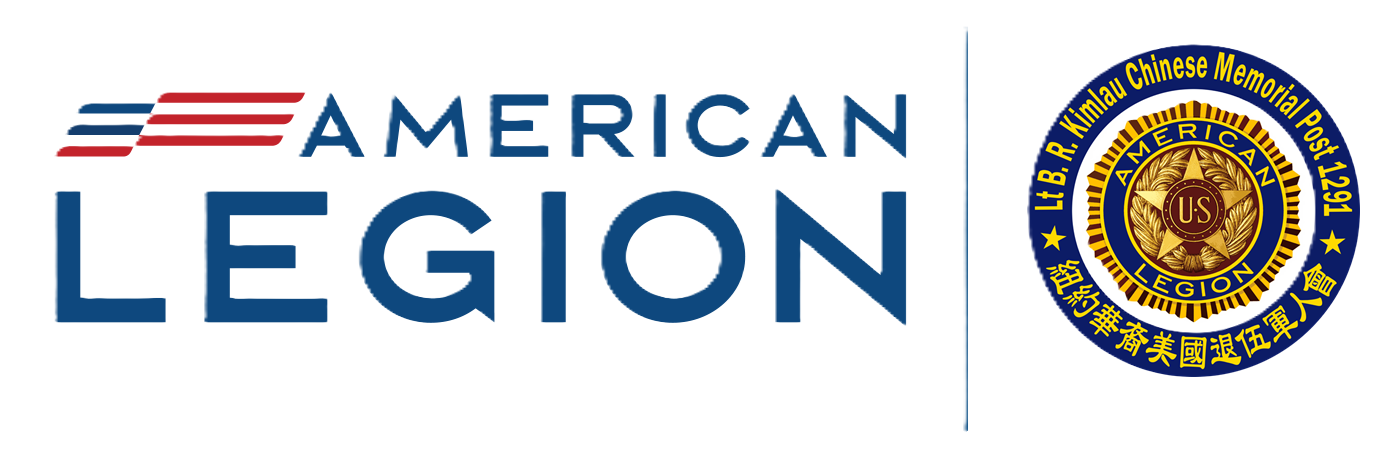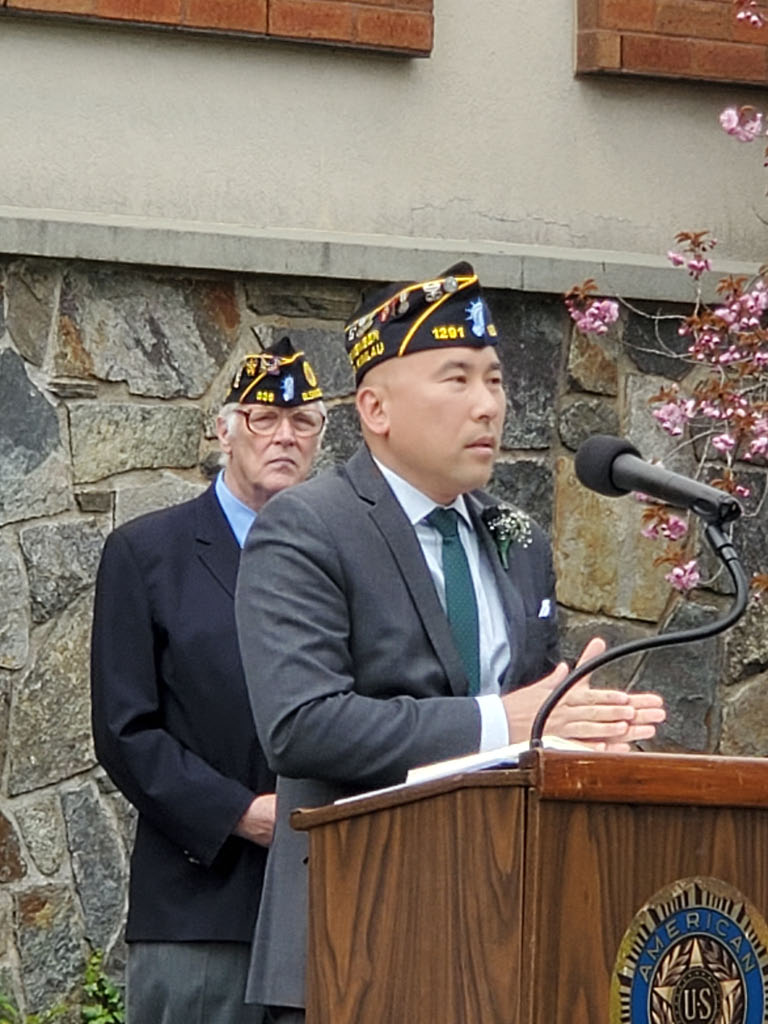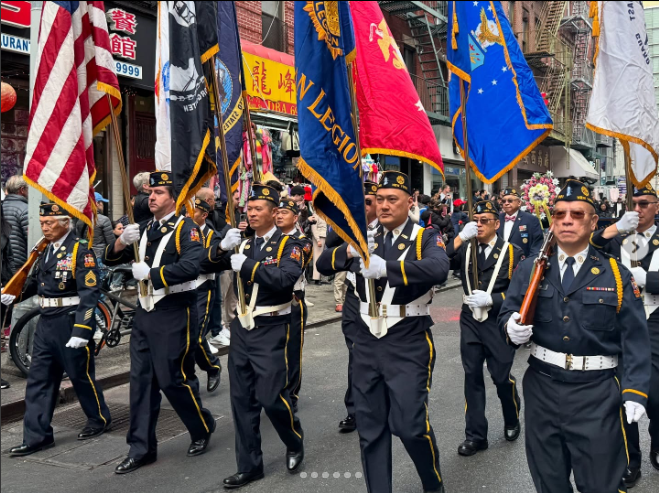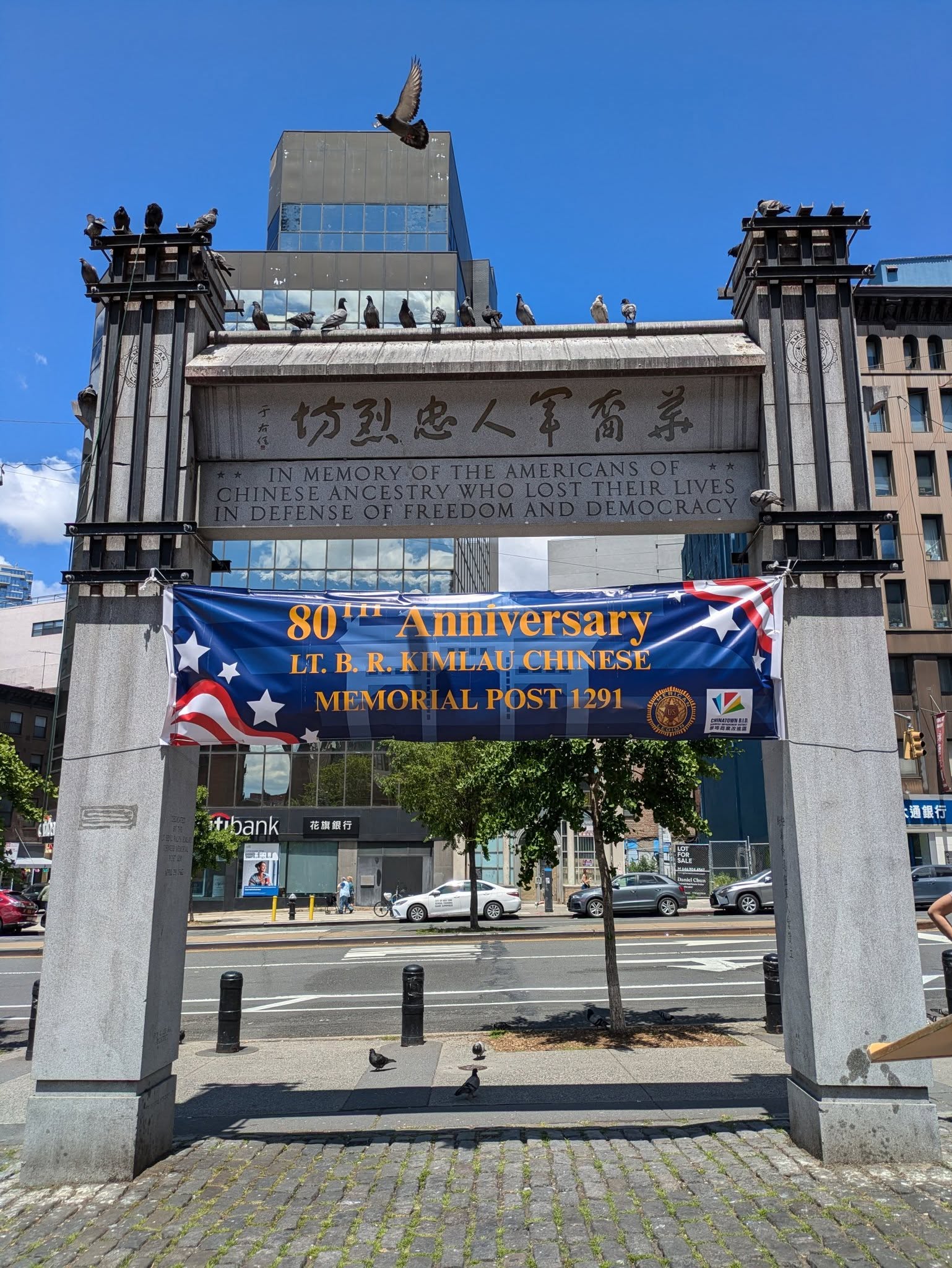Kimlau War Memorial becomes NYC’s first landmark related to Chinese American history
Posted On Tue, June 22, 2021 By Devin Gannon
New York City gained its first landmark related to Chinese American history and culture on Tuesday. The Landmarks Preservation Commission voted to designate the Kimlau War Memorial, a tribute to Chinese American veterans located in Chinatown. Designed by architect Poy Gum Lee, the memorial honors Americans of Chinese descent who died during World War II and has served as a gathering place for veterans.
The agency first calendared the memorial last month, as the country marked Asian American and Pacific Islander Heritage Month. The landmark designation comes as the city sees an uptick in anti-Asian hate crimes.
“I think this is a historic moment for the Chinese community,” LPC Commissioner Wellington Z. Chen, who also serves as the executive director of the Chinatown Partnership, said during Tuesday’s meeting.
The memorial is located within Chatham Square, which was co-named Kimlau Square in 1961 in recognition of Lieutenant Benjamin Ralph Kimlau. Kimlau, a Chinese American from New York City, served as an Air Force bomber pilot in World War II and died in combat at the age of 26.
Named in honor of Kimlau, the American Legion, Lt. B.R. Kimlau Chinese Memorial Post 1291 was founded in 1945 by Chinese American veterans of World War II. In the 1960s, American Legion asked the city to pay tribute to the Chinese Americans who served with a memorial dedicated to them. In 1961, Chatam Square was renamed and a year later, the Kimlau Memorial Arch was unveiled.
Designed by Lee, who was born at 13 Mott Street in 1900 and later studied at the Pratt Institute and Columbia University, the Kimlau War Memorial was designed as a ceremonial gateway to Chinatown. The granite structure stands nearly 19 feet tall and features elements of traditional Chinese architecture and streamlined modernist design, according to Kate Lemos McHale, the director of research at LPC.
The monument, inscribed in both Chinese and English, reads: “In memory of Americans of Chinese Ancestry who lost their lives in the defense of freedom and democracy.”
Flanked by two benches, the site serves as a space for reflection and remembrance. It continues to serve as an annual site of celebration to honor war veterans and as a symbol of the contributions of Chinese Americans to U.S. history.
“The arch and its two surrounding benches feature a streamlined interpretation of traditional Chinese architecture, with a peaked roof, interlocking brackets, and a symmetrical configuration,” reads a report from the LPC. “The arch itself is a typical Chinese architectural element that can be used both as a physical gateway or as a decorative symbol.”
While there are several significant landmarks in Chinatown, none are directly related to the history and culture of Chinese Americans.
The memorial, which is overseen by the city’s Parks Department, is currently undergoing reconstruction as there are some structural issues and cracks in the granite.
Press Release
For Immediate Release: June 22, 2021
Contact: lpcpressoffice@lpc.nyc.gov, 212-669-7938
LPC Recognizes Native American and Chinese American History with the Designation of Two Individual Landmarks
The Aakawaxung Munahanung (Island Protected from the Wind) Archaeological Site is the first NYC landmark specifically recognizing the many generations of Indigenous peoples who lived here.
The Kimlau War Memorial is the first NYC landmark that specifically recognizes Chinese American history and culture.
Aakawaxung Munahanung Archaeological Site and Kimlau War Memorial
New York –Today, the New York City Landmarks Preservation Commission (LPC) unanimously voted to designate the Aakawaxung Munahanung (Island Protected from the Wind) Archaeological Site on Staten Island and the Kimlau War Memorial at Kimlau Square in Chinatown. The Aakawaxung Munahanung (Island Protected from the Wind) Archaeological Site is associated with over 8,000 years of occupation by Indigenous peoples, contains the region’s largest known cultural complex, and is the best-preserved known archaeological site associated with an Indigenous presence in New York City. It is the first NYC landmark specifically recognizing the many generations of Indigenous peoples who lived here. The Kimlau War Memorial is significant as a public monument dedicated to the contributions of Chinese Americans to American history, for its architecture, and its prominence as a symbolic gateway to Chinatown. While there are several New York City landmarks in Chinatown, this is the first that specifically recognizes Chinese American history and culture.
“I am proud that today the Commission designated its first landmark specifically recognizing New York City’s many thousands of years of Native American history and culture, and also the first landmark recognizing the contributions of its Chinese American community,” said Landmarks Preservation Commission Chair Sarah Carroll. “As part of the agency’s equity framework, I am committed to advancing the designation of landmarks that better represent the city’s diversity and tell the story of all New Yorkers. The recognition and celebration of the history that these two sites embody is so important, and both are within city parks and accessible for the public to enjoy.”
“We thank the Landmarks Preservation Commission for recognizing the historic and cultural significance of the Aakawaxung Munahanung (Island Protected from the Wind) Archaeological Site in Conference House Park and the Kimlau War Memorial at Kimlau Square,” said NYC Parks Commissioner Mitchell J. Silver, FAICP. “As we work to build a more equitable park system, these landmark designations increase representation and honor the stories and contributions of both Indigenous peoples and Chinese Americans in our public spaces.”
The Aakawaxung Munahanung (Island Protected from the Wind) Archaeological Site, which was calendared and heard as the “Conference House Park Archaeological Site,” includes approximately 20 acres of highly significant archaeologically sensitive land located within the city’s Conference House Park at the southern end of Staten Island in Tottenville. This name was identified through LPC research and in consultation with the city’s Federally-recognized tribes. It is derived from the old Munsee language name for Staten Island, which historic documents suggest may have also applied to this particular site. The site still contains significant historic–era archaeological resources, including evidence from the period of contact between Indigenous peoples and European colonists and the Colonial period
Archaeology has provided information about the landmark site’s long occupation by Indigenous peoples. Over 19 archaeological projects have occurred in this area uncovering Indigenous life beginning about 8,000 years ago and continuing through the Colonial period. In the Woodland period (500 BC – AD 1100), a village was likely at this site, as well as a cultural complex. The people who lived here were Lenape and spoke Munsee. They relied upon the area’s abundant resources that surrounded the site, including ample oysters, fish, and game. During the Colonial period, the British enacted a series of land deeds around 1670 that took Staten Island from the Lenape, but it is not known exactly when they left the site. Soon after, Christopher Billopp received a British patent for land that included the landmark site as well as the land to the north, on which he built Conference House in 1675, a designated New York City Landmark. In 1926, Conference House Park was donated to the City of New York and today it remains under the ownership of the New York City Parks Department. The modern park includes paths, hiking and biking trails, and a Visitor’s Center. Woodlands and beach comprise the remainder of the site. Designation protects the site’s below-ground archaeological resources.
The Kimlau War Memorial is a granite ceremonial gateway located within Kimlau Square, which is under the care of the New York City Parks Department. The arch, sponsored by the American Legion, honors Chinese American soldiers who died while serving in the United States military. Both the arch and plaza are named after Second Lieutenant Benjamin Ralph Kimlau (1918–1944). Kimlau lived in Chinatown with his family until he enrolled at the Pennsylvania Military College, where he graduated in 1942, the only Chinese American in his class. Despite widespread discrimination against Asian Americans in the 1940s, Kimlau served as a Second Lieutenant in the US Army Field Artillery Branch. He died while attacking Japanese military installations in the South Pacific in WWII, at the age of 26.
The memorial, designed by the prominent Chinese American architect Poy Gum Lee, is a restrained modern granite ceremonial gateway with a peaked roof, flanked by two benches finished in pebbledash concrete. Poy Gum Lee’s work has been cited by scholars as among the most important Chinese American architecture of its time. Many of the most recognizable buildings associated with the Chinese American community in Chinatown were Lee’s designs or developed from his concepts. The arch and its pair of benches consist of a unique blend of traditional Chinese architectural forms with a streamlined mid-century modern aesthetic. Inscribed on the nearly 19-foot-high arch is a dedication in both English and Chinese to the memory of Chinese American war casualties. As part of Kimlau Square, the arch continues to serve as the site of an annual celebration to honor war veterans and remains an important tribute to Chinese American patriotism.
“The Kimlau War Memorial honors Chinese-American soldiers who, despite racism and discrimination, demonstrated unwavering commitment to defending their country,” said Council Member Margaret Chin. “This arch is such a special part of Chinatown, and I’m so happy that the Landmarks Preservation Commission has voted to designate this monument as a city landmark. The memorial signifies the great sacrifices of the Chinese-American soldiers during World War II and bears the name of a young 26-year-old Second Lieutenant Benjamin Ralph Kimlau, who died while attacking Japanese strongholds in the South Pacific. Thank you to the American Legion and the New York City Parks Department for maintaining this important symbol of Chinese-American history.”
“It is with great pride that we celebrate the designation of the Kimlau War Memorial Arch as a Landmark by the New York City Landmarks Preservation Commission in this, the 76th Anniversary of the founding of the Lt. B.R. Kimlau Chinese Memorial Post 1291 of the American Legion which was instrumental in the creation of the monument in 1962,” said Commander Randall T. Eng, Lt. B.R. Kimlau Post 1291, American Legion. “For nearly 60 years it has stood as a memorial to those in the Chinese American community who made the ultimate sacrifice in defense of their country, the United States of America. In light of the recent wave of anti-Asian violence and bigotry, the Arch serves as a reminder of the contributions of Asian-Americans to the defense of freedom and democracy in times of great national peril. We thank the Commission for this fitting tribute.”
“We thank the Landmarks Preservation Commission for their thoughtful consideration,” said Dian Dong, Lt. Benjamin Ralph Kimlau’s niece. “Thousands of Chinese Americans bravely served this country in the US Armed Forces. As a NYC landmark, the Kimlau War Memorial Arch will continue as a source of pride for the Chinatown community, and can serve as a destination for students, tourists, historians, educators.”
About the Landmarks Preservation Commission (LPC)
The Landmarks Preservation Commission is the mayoral agency responsible for protecting and preserving New York City’s architecturally, historically and culturally significant buildings and sites. Since its creation in 1965, LPC has granted landmark status to more than 37,000 buildings and sites, including 1,443 individual landmarks, 120 interior landmarks, 11 scenic landmarks, and 152 historic districts and extensions in all five boroughs. For more information, visit www.nyc.gov/landmarks and connect with us via www.facebook.com/NYCLandmarks and www.twitter.com/nyclandmarks.






